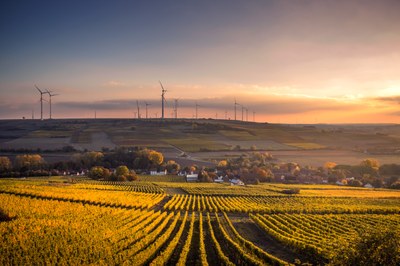All official European Union website addresses are in the europa.eu domain.
See all EU institutions and bodiesEmissions of key air pollutants monitored under EU law continued to decline across most EU Member States maintaining a trend since 2005. However, the most problematic area remains reducing ammonia emissions, emitted mostly by the agriculture sector. The latest annual European Environment Agency (EEA) analysis of air pollution data provided by EU Member States is published today.
In 2021, 13 Member States met their respective 2020-2029 national emission reduction commitments under the EU’s National Emission reduction Commitments Directive (NECD) for each of the five main pollutants (nitrogen oxides, non-methane volatile organic compounds, ammonia, sulphur dioxide and fine particulate matter) according to the EEA assessment. Thirteen Member States failed to do so for at least one of the five main air pollutants (and one Member States did not report this year). The overall downward trend since 2005 comes despite economic growth over the same period.
The EEA briefing is based on the latest available data reported by Member States in 2023 for their 2021 emissions. It describes the progress made towards reducing emissions of the five main air pollutants regulated under the directive. It presents an assessment of Member State performance against the emission reduction commitments for 2020-2029 as well as their progress towards achieving the more ambitious reduction commitments that will apply from 2030 onward.
Achieving further reductions for 2030 and beyond will be a significant challenge for nearly all EU countries for nearly all pollutants, as the reduction rate for some pollutant emissions is now levelling off according to the briefing. One exception is sulphur dioxide, where many countries are already compliant with their 2030 reduction commitment. Sulphur dioxide emission contribute to acidification and is responsible for damage to ecosystems and buildings, among other detrimental effects.
Reducing ammonia emissions remains the biggest challenge. Ammonia emissions are a concern as they contribute to excessive nitrogen presence in water ecosystems leading to the known phenomenon of eutrophication, among other environmental negative impacts. Ammonia is also a precursor to fine particulate matter, very harmful to health. Ten Member States will have to reduce their ammonia emissions compared to 2021 levels to fulfil their 2020-2029 reduction commitments. The agriculture sector is the principal source, responsible for 93% of total ammonia emissions in the EU. Since 2005, ammonia emissions have only slightly decreased in many Member States and in some cases have even increased.
This information is based solely on data provided by Member States and does not constitute a compliance check by the European Commission. The numbers presented here may be subject to change in relation to the result of the NEC directive inventory review.
Reporting under UNECE Air Convention
The separate annual EU emission inventory report 1990-2021, also published today by the EEA, showed a continued downward trend in emissions for most main air pollutants, however emissions decreased more slowly from 2007 to 2021. The report looks at air pollutant emissions reported by the EU under the UNECE Convention on Long-range Transboundary Air Pollution (the Air Convention) and includes a wide range of substances. These include the five main air pollutants (NOX, NMVOCs, SO2, NH3 and PM2.5) but also others such as heavy metals, black carbon or persistent organic pollutants.
Background
Under the National Emission reduction Commitments (NEC) directive 2016/2284, EU Member States are required to meet national commitments to reduce emissions for these five air pollutants to deliver clean air for human health and the environment.
The EEA analysis is based on the latest air pollutant emission inventory data, as reported by Member States in February 2023 both under the Directive and the UNECE Air Convention.











